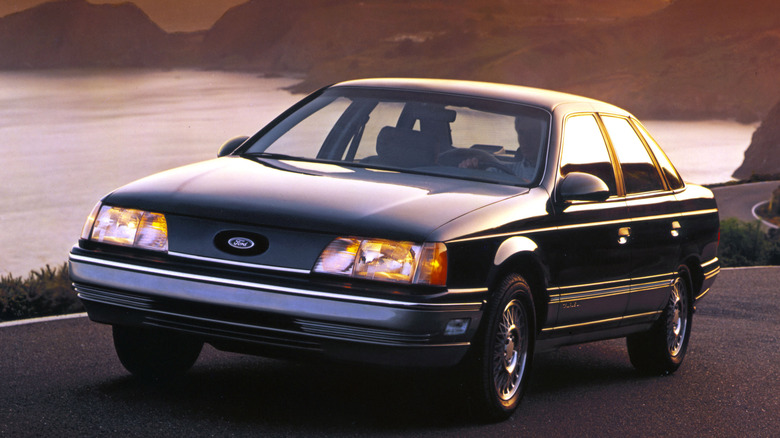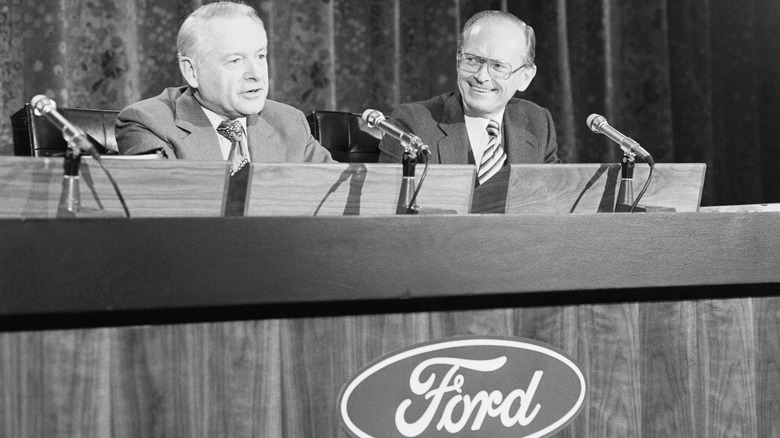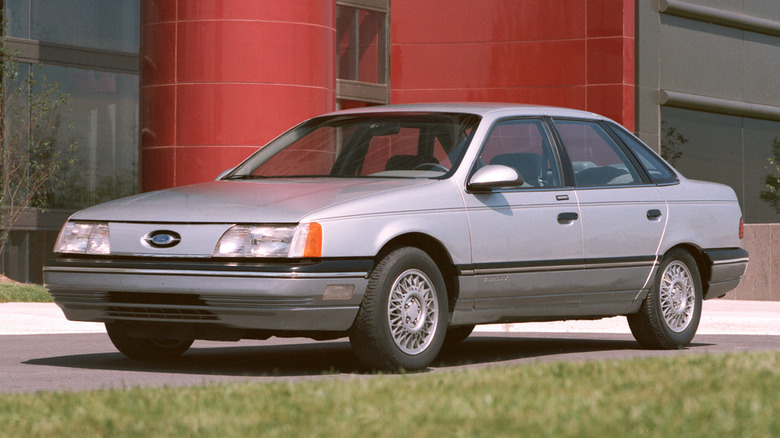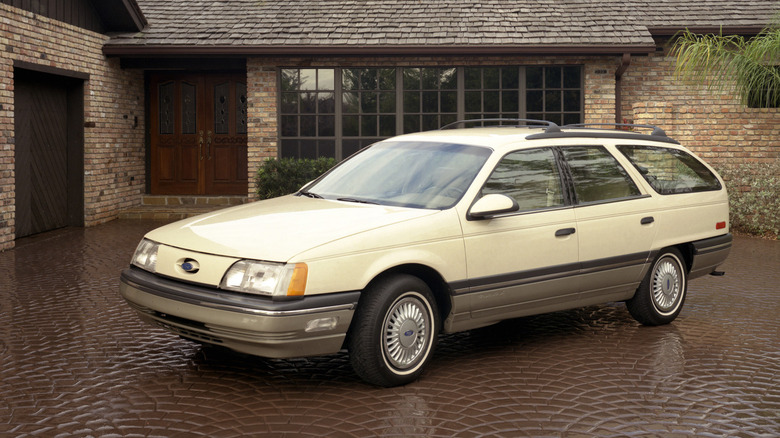Why The 1986 Ford Taurus Was Far More Important Than You Realize
In the century-plus that Ford has been making cars, few of the manufacturer's vehicles have amassed more popularity than the 1986 Ford Taurus. At the time of its release, this particular model year garnered tons of positive reception for its incorporation of European design sensibilities, a futuristic aesthetic, and exceptional handling. The automobile was such a hit that it kickstarted an entirely new and enduring dynasty in the Ford family, with the Taurus serving as a consistent staple up until Ford discontinued it after over 30 years of the sedan's success.
It's easy to understand that the 1986 Ford Taurus was something of a phenomenon in the automotive space, but its significance in history goes far beyond simply being a treasured commodity among daily drivers. In truth, if it weren't for the successful debut of the Taurus, the entire car industry would most likely look substantially different compared to today. With that in mind, here's why exactly Ford's 1986 hit was such a crucial release for the greater world of vehicles.
Ford was in trouble before the Taurus
The modern identity of Ford in the automotive landscape is that of an enormous, unflinching titan — a manufacturer so ubiquitous that it's difficult to even imagine a world where it doesn't exist. That's why some may find it surprising to hear that immediately prior to the entrance of the 1986 Ford Taurus, the company behind it faced the real danger of becoming a defunct car brand.
In the years leading up to the Taurus' release, Ford's reputation had skewed negative, with its cars garnering criticism for outdated designs and features. That drop in demand clawed chunks out of the organization's bottom line, as Ford reported a $1.5 million dollar loss in 1980 to The New York Times — what was then considered the largest annual loss for a corporation in American history. These financial woes continued to build up until Ford stood at the precipice of having to file for bankruptcy.
It was from this crisis that the Taurus was born. The development of the new model was more of a last-ditch gamble than a methodical pivot from what came before. The company took a substantial risk, investing $3 billion into the project in the hopes of creating something bold, fresh, and almost entirely unproven. The team clearly understood that Ford's traditional mindset for building cars was no longer viable, but there was also no guarantee that this ambitious new model would be the salve the company so desperately needed.
Saving Ford from financial devastation
Despite the dire straits that Ford was in at the time, and the risk that came with betting most of its chips on a revolutionary project like the 1986 Ford Taurus, the initiative proved successful. Critical reviews for the 1986 Taurus, such as that from Car and Driver, were extremely positive; praising the vehicle for its innovation in the field of the Ford automobiles. Perhaps even more important than a warm critical reception, however, was its popularity with consumers.
It didn't take long to see that the Taurus was going to be a commercial success. Figures from Ward's Automotive Yearbook show that the car sold over 236,000 units alone in the 1986 calendar year. That number only increased with each consecutive year until 1989, when the car surpassed more than 1 million overall units sold.
By the end of the Taurus' first generation in 1992, the car had managed to crack more than 2 million units sold. Sales were incredibly strong — strong enough to simultaneously save Ford from bankruptcy, and revitalize the company's image in the eyes of the public.
If the Taurus hadn't been as successful as it was, there's a solid possibility that Ford would not have managed to survive into the modern car industry. Thankfully, the Taurus brought the company back from the brink and ensured its continued prominence in the industry, with the Taurus reliably serving as one of its crown jewels in the decades to follow. To this day, the car remains one of Ford's 10 best-selling vehicles of all time.
The Taurus heralded sleeker modern cars
For those with far more experience in the realm of modern cars, looking back at a photograph of the 1986 Ford Taurus — or even the genuine article in-person — may prove surprisingly underwhelming.
For all the buzz around its unique styling, the vehicle actually doesn't look that dissimilar from a typical mid-size car in today's world. However, that similarity is actually proof of the Taurus' significance. In many ways, Ford's 1986 juggernaut was the vehicle that popularized the sleeker, curvier, and more aerodynamic veneer that many cars employ nowadays.
While Ford emulated and incorporated many design elements of classic European cars into the Taurus' development, the company also sought to position the car as something of an unprecedented revolution. Its reveal had a sci-fi theme, accentuating the decidedly alien aesthetic of its rounded exterior. In a market flooded with boxy car designs, the Taurus was fresh and evocative. Its futuristic sensibility was only bolstered in the public consciousness by its presence in popular media like 1987's "RoboCop."
The bold and unique design of the Taurus was a substantial part of its popularity with the masses. In turn, that popularity cemented the idea that the sleeker car design was here to stay. As time went on, more and more car manufacturers would align their range of automobiles with the minimal hard edges of the Taurus, until this design philosophy grew into the dominant basis of the industry. Suffice to say, if not for the Taurus, the cars of today might look quite a bit different.



